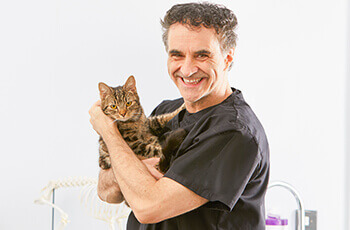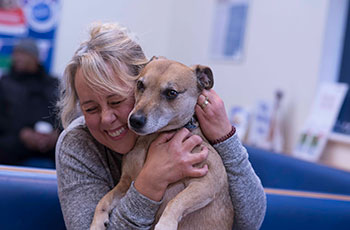The 3 key questions to ask when comparing pet insurance policies.
The importance of diagnostic tools in pet care
Noel Fitzpatrick on the importance of diagnostic tools in pet care
Technology is wonderful. In addition to helping me save pets’ limbs and lives, advances in this area have
enabled me to diagnose issues quicker and begin treatment plans sooner.
From blood tests and X-ray pictures to MRI, CT and Ultrasound scans, there is a wonderful range of
diagnostic possibilities which we can now offer families.
I say offer, rather than give, because state-of-the-art diagnostic tools cost a lot of money to buy and run. This means that an MRI scan for example, can be quite expensive. However, not all CT and MRI scanners cost the same to buy and not all offer the same resolution, so my personal opinion is that vets have a moral responsibility to reflect this in the price structure. The machine operator and those interpreting the images are also important. So my advice is that you should always check the quality and service you are paying for. I strongly believe that vets have an ethical responsibility to choose the modality of diagnostic imaging wisely and charge responsibly. For example one doesn’t need an MRI scan to look at hip arthritis if a simple inexpensive X-ray picture will suffice. I believe it’s imperative that vets choose and deploy appropriate diagnostic tests with optimal equipment and are transparent about their cost structure.
In an ideal world, your pet insurance would cover any bill for diagnostic tests and we’d book your pet an appointment right way. Sadly, we don’t live in an ideal world.
Professor Noel Fitzpatrick
In an ideal world, your pet insurance would cover any bill for diagnostic tests and we’d book your pet an appointment right away. Sadly, we don’t live in an ideal world. Today, there are many pet insurance policies on the market and, behind the headlines, some of them limit the cover for certain diagnostics, like MRI scans. I believe it’s a two-way street of responsibility – with the veterinary profession charging fairly and the insurance specialists advising responsibly; for me, integrity is key

Restrictions within the insurance policy can limit the options at your vet’s disposal or result in you having to find money out of your own pocket to fund treatment not covered by your policy. So it’s important when you’re shopping around for pet insurance that you ask the right questions. Does the policy impose limits on diagnostics? How much? And for which tools? You need to understand what will and won’t be covered, or you may find that the latest veterinary technology is not available for your pet.
Professor Noel Fitzpatrick (best known as the Supervet) is founder of world-class specialist referral practice Fitzpatrick Referrals.









